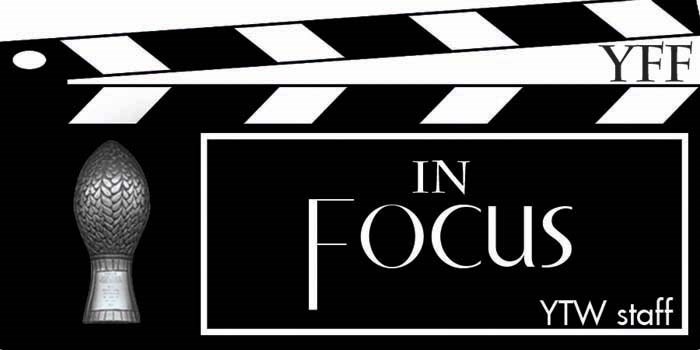As the camera pans across the assortment of barns that represent the only factory for fighter aircraft in Canada, located in Carman, Manitoba, you immediately get the sense that it’s proprietor is a bit of an eccentric at the minimum. The film Stephen Low made about his efforts, The Defender, doesn’t do anything to dissuade this impression. The film was the toast of the 1989 Yorkton Film Festival with five awards including Best Production.
To call Bob Diemert crazy might be going too far, but he is right on the line between insanity and eccentricity – that is, he does almost run out of money pursuing his dream. Inspired by the sheer cost of the then-new CF-18 fighter, Diemert wants to make a Canadian solution, a significantly slower armored aircraft that is a mere $25,000. As he repeatedly points out, you could buy thousands of copies of his Defender for that amount of money. This is, of course, if he can get it off the ground, both literally and figuratively.
He’s joined in his quixotic quest by Chris Bell, described as an “electronic genius” and also as a man who happens to own a tank. In an early sequence, testing their theories of airplane vs. tank warfare, Bell harasses a pile of farm animals while Diemert chases him from the air in a borrowed light aircraft. It’s an absurd sequence, like watching two overgrown children in the midst of make believe, but let’s not dismiss these two men entirely.
Diemert is an expert on aircraft restoration and a stunt pilot, flying in the 1969 film The Battle of Britain with his rebuilt Hawker Hurricane. Later in the film, he rebuilds a Mitsubishi A6M Zero – the aircraft flown by Japan at Pearl Harbour – out of what appears to be a pile of rust and bolts dug out of a jungle. Bell, meanwhile, builds custom cars, his pride and joy being a model which looks remarkably similar to the Citroen Karin concept of 1980, albeit clearly built by a man in a shed in Manitoba.
They do have some skills, in other words, and while the film never quite asks us to take them seriously, they’re not quite the bumbling fools that you, or indeed the people in charge of issuing airworthiness certificates at Transport Canada, would assume. Then again, they build the Zero in a building where it is larger than the door, so there is a fair bit of bumbling involved.
The deadpan narration – provided Cedric Smith – adds some extra comedic punch. As Smith gravely intones a line about taking a proposed wing design to the edge of its aerodynamic limit, we cut to Diemert clinging on to the back of a pickup truck with the wing attached. Smith, like the subjects of the film, takes this very seriously, even if an outsider might notice the absurdity of the situation.
It’s hard not to root for Diemert and Bell, even as you know that they can’t possibly succeed. Diemert is putting his life on the line, there are references to a test flight accident where he was seriously injured. Still, we know going in that the Air Force will never buy aircraft from a couple of plucky amateurs in the middle of nowhere.
Years later, as the government and military contemplate a replacement to those same CF-18s, one wonders if Diemert will return, proposing a new design for an aircraft that costs the same as a well-equipped pickup truck.



